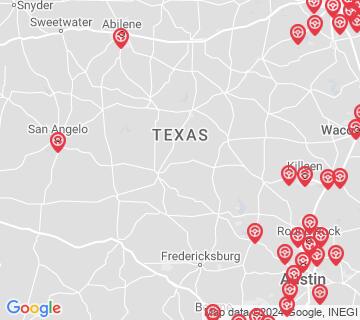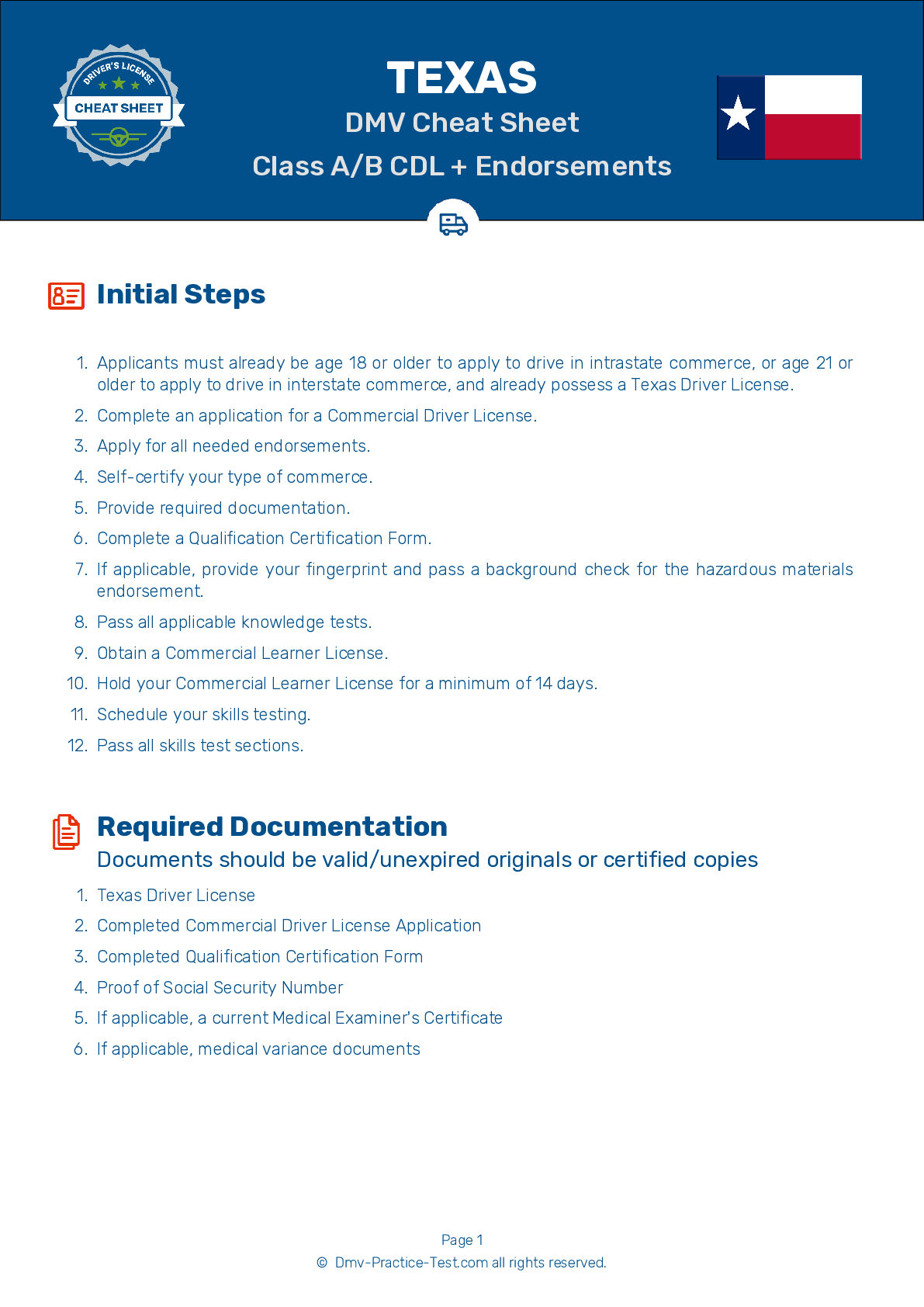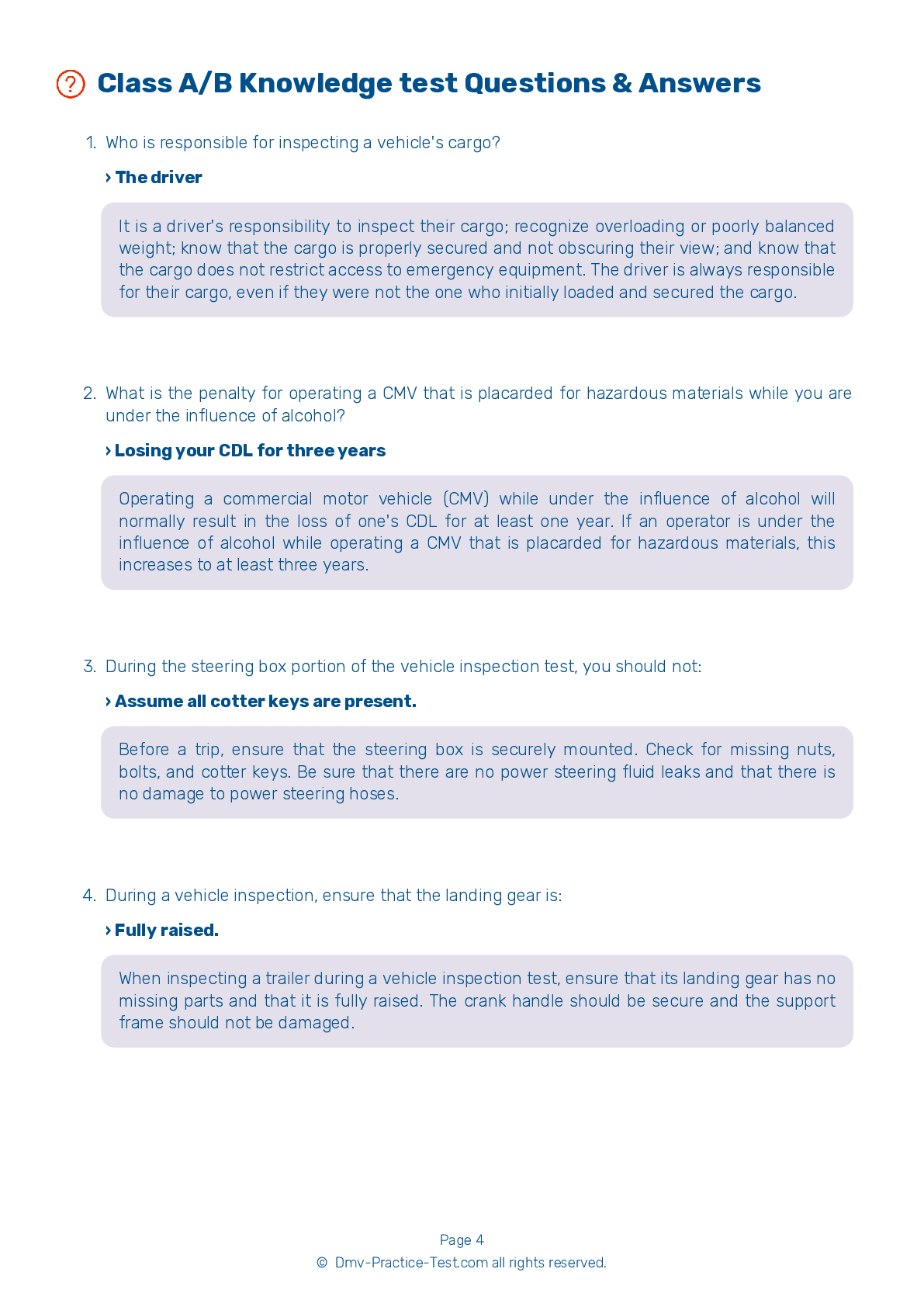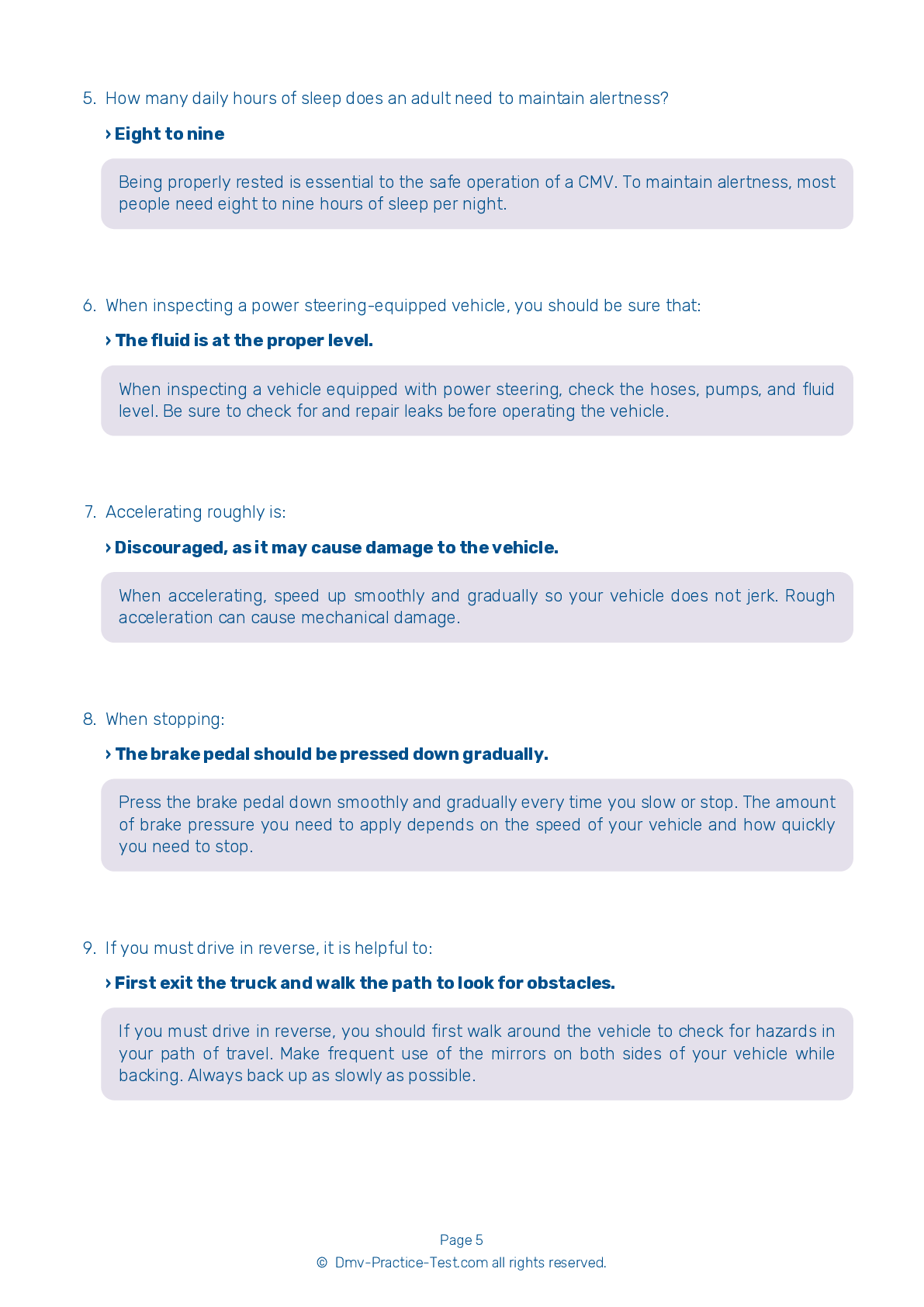Knowledge Test Class A #1
Class A Driving Test | Texas 2025 #1 Page 4 of 10
Train for FREE online with our Texas class A license test. The official exam test consists of several obligatory parts, with all of them checking your knowledge of different blocks of road rules. If you need to obtain a TX CDL class A permit in 2025, practice as much as possible. Free sample tests published on our website will help you check and improve your knowledge and boost your grades. Please bear in mind that CDL class A requirements may vary from state to state.
70
56
22
22 . When driving down a steep grade, your brakes may fade. What happens if brakes fade?
They work differently from front to back.
If you use your brakes too much when traveling on a steep downgrade, they may overheat and become less effective. To avoid causing your brakes to overheat on a steep hill, you should rely on engine braking.
23 . The air entering air storage tanks may contain:
Antifreeze.
The air that enters air storage tanks in an air brake system usually contains a certain amount of water and compressor oil. Because accumulations of these materials can damage the braking system, tanks are equipped with drains to allow their removal.
24 . If the low pressure warning signal activates while you are driving, you should:
Put on your hazard lights and continue driving.
If the low pressure warning signal activates while you are driving, it is important that you safely exit the roadway as soon as possible and park your vehicle. If the air pressure gets too low, the brakes will no longer work well enough for you to stop safely.
25 . The two indicators that determine when you should upshift are:
Oil pressure and air brake pressure.
There are two indicators that determine when you need to shift into a higher gear. One indicator is the engine speed (rpm). You should read your vehicle's manual to learn its rpm range and shift up when you reach the top of that range. The other indicator is road speed (mph). You should learn which speeds each gear can accommodate, then keep an eye on the speedometer and shift up as needed.
26 . When you press the brake pedal in a vehicle with S-cam brakes, air pressure pushes out the rod and moves the:
Alcohol evaporator.
When pressing the brake pedal in a vehicle with S-cam brakes, air will enter the brake chambers. The added air pressure will push out the rods and move slack adjusters, twisting the brake camshafts.
27 . Which of the following is not a type of retarder?
Electric
Retarders are mechanisms in some vehicles that help slow a vehicle and reduce the need for braking. The four basic types of retarders are exhaust, engine, hydraulic, and electric.
28 . When asked to make a lane change during the skills test, you should:
Not make the lane change if you don’t want to.
You will be asked to make multiple lane changes during the driving skills test. Before changing lanes, you should make the necessary traffic checks and use proper signals. Change lanes smoothly when you can do so safely.
Search the best driving school in your neighbourhood
2025 Texas | Frequently Asked Questions
To acquire a CDL Hazmat endorsement in Texas, you must first have a Commercial Driver's License (CDL). Then, pass the Hazardous Materials Endorsement Knowledge Test at a Texas Department of Public Safety office. After passing, you'll need to undergo a TSA background check. Once cleared, the endorsement will be added to your CDL.
To obtain a CDL Hazmat license, you must first hold a valid Commercial Driver's License (CDL). You must be at least 21 years old and have a clean driving record. You'll also need to pass the Hazardous Materials Endorsement Knowledge Test and undergo a TSA background check. Good vision and physical health are also prerequisites.
When applying for a CDL Hazmat endorsement, you will need your current CDL, proof of U.S. citizenship or legal status (like a birth certificate or green card), and proof of identity and Texas residency. You'll also need your Social Security card and a completed Application for Texas Driver License or Identification Card. Lastly, you'll need to pass a TSA background check.
Yes, there is a dedicated written test for the CDL Hazmat endorsement. Called the Hazardous Materials Endorsement Knowledge Test, it covers topics like loading and unloading hazardous materials, bulk packaging marking, driving and parking rules, and emergency response procedures. This test must be passed to obtain the Hazmat endorsement.
The written test for the CDL Hazmat endorsement covers a range of subjects related to hazardous materials. These include recognizing hazardous materials, safe loading and unloading procedures, proper use of placards and labels, emergency response procedures, driving and parking rules for hazardous materials, and understanding the associated risks and regulations.
Yes, acquiring a CDL Hazmat endorsement comes with additional charges. These include a fingerprinting fee for the required TSA background check, and an endorsement fee. The exact costs can vary, so it's recommended to check with your local Department of Motor Vehicles (DMV) or similar agency for the most accurate information.
Yes, obtaining a CDL Hazmat endorsement requires a background check and security clearance. The Transportation Security Administration (TSA) conducts the check, which includes fingerprinting and a review of criminal, immigration, and terrorism records. This process is necessary to ensure the safety and security of hazardous materials transportation.
Yes, specialized training is required for the CDL Hazmat endorsement. Applicants must pass a written test, and in some cases, a driving test with a vehicle that carries hazardous materials. Once passed, this endorsement is added to your Commercial Driver's License (CDL). Regular renewal of this certification is also required.
No, you cannot legally transport hazardous materials without a valid Commercial Driver's License (CDL) with a Hazardous Materials (Hazmat) endorsement in the United States. This requirement ensures that drivers have the necessary training and knowledge to handle such materials safely, protecting public safety and the environment.
Yes, you can add the CDL Hazmat endorsement to your current CDL. You don't need to apply for a new CDL. However, you must pass the Hazmat knowledge test, undergo a TSA background check, and pay the required fees. Once completed, the endorsement will be added to your existing CDL.




